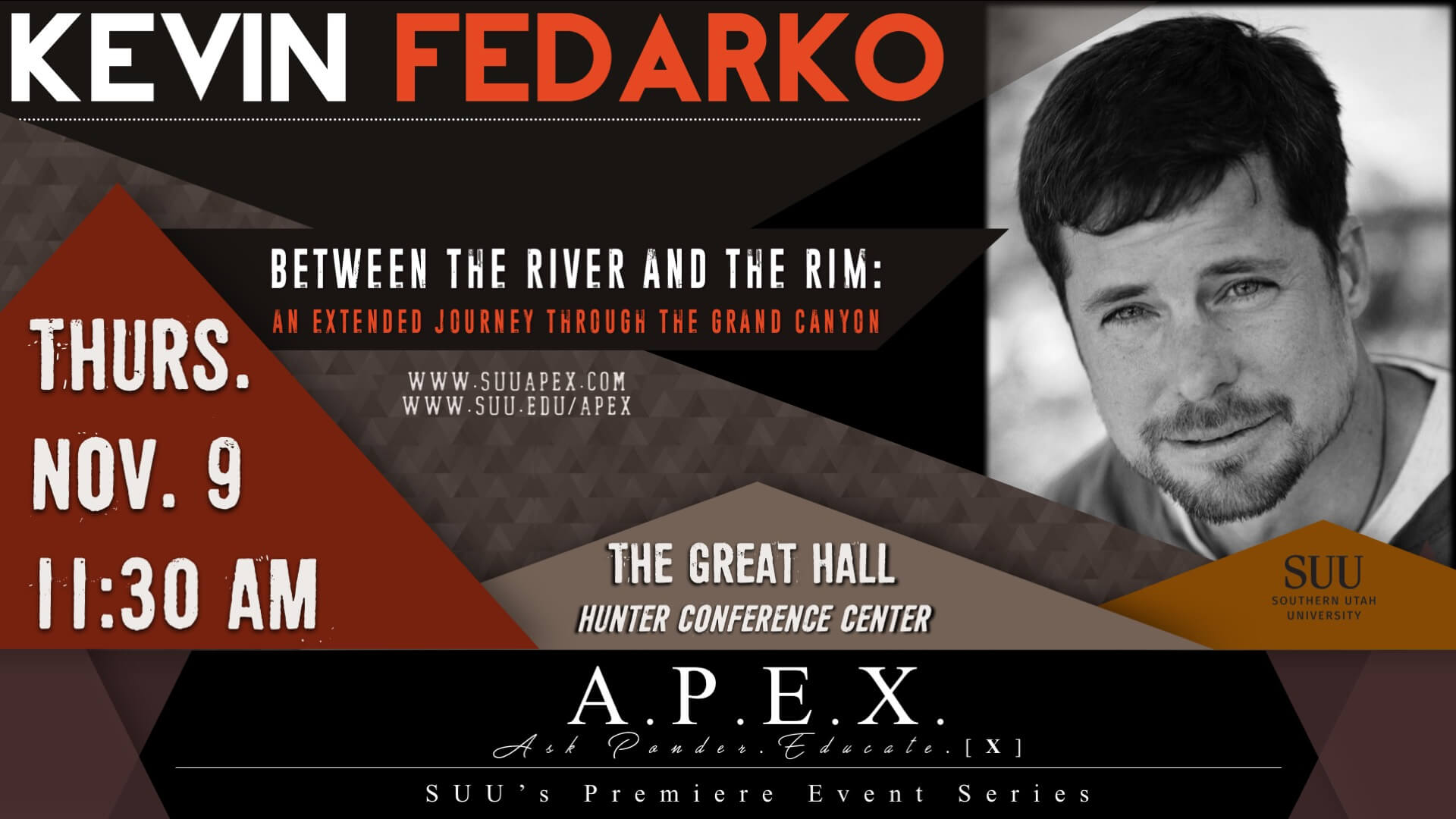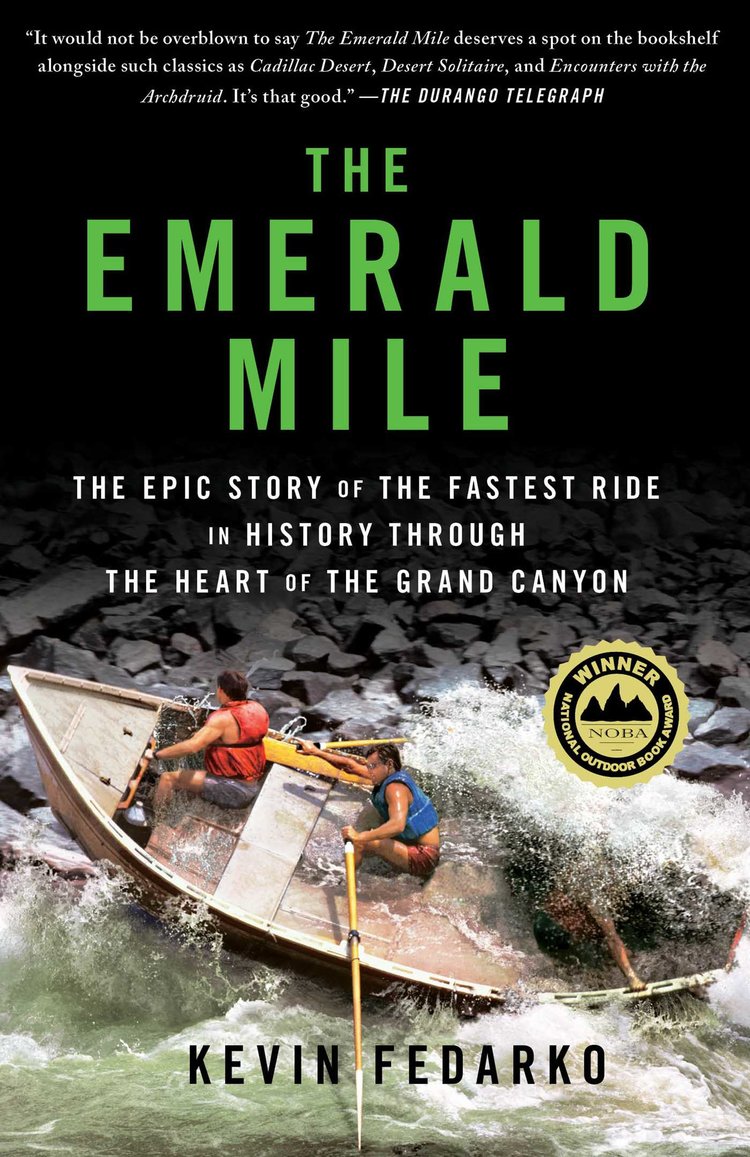
November 9, 2017
Kevin Fedarko
The Great Hall
In 2004, 38-year-old writer Kevin Fedarko quit his job to spend his summers as a baggage boatman, rowing boats down the Colorado River through the Grand Canyon, to experience one of the most iconic places on earth and hear its stories. One of the stories stuck with him after his career as a boatman: Guide Kenton Grua’s idea to take advantage of the massive runoff of the spring of 1983, which created a flow of 70,000 cubic feet per second (it typically averages between 8,000 and 25,000 cfs), and make an attempt at a speed record-frantically rowing with two partners a 280-mile length of river in less than two days
Fedarko’s 2013 book about the speed attempt, The Emerald Mile, took a Grand Canyon campfire story and made it into a classic of adventure literature, weaving together the stories of early Grand Canyon exploration (including the Powell expeditions), the construction of the Glen Canyon Dam, the history of river guiding in the Canyon, and Grua’s biography into a rich narrative. The book won a 2013 National Outdoor Book Award, made the New York Times Bestseller List in September 2014, and has put Fedarko in a role of defending the Grand Canyon as a sacred place. We chatted with him about the book, his career as a boatman, and the Grand Canyon.

Event Reflection
by Billy Clouse, Blogger for A.P.E.X. Events and Editor-in-Chief of Thunderground
Writer and adventure guide Kevin Fedarko’s lecture was truly moving. I knew going into it that I would enjoy what he had to say — there was no way the story of a through-hike of the Grand Canyon could be boring — but I didn’t realize how engaged I would become.
Early on in his talk, Fedarko shared the story of one of his failures in the Grand Canyon. He had always dreamed of leading white water tours, but he quickly learned that his method of achieving that goal wouldn’t work.
He decided to learn how to operate the boats in one of the hardest areas to navigate, and he stressed to audience members the importance of working their way up. Although it may seem fun to hit the ground running, it’s very unlikely that you will succeed.
As the lecture progressed, Fedarko explained his journey from rowing the trailing boat and being responsible for human waste disposal to hiking the Grand Canyon in both the extreme heat and cold. Along the way, he looked into development proposals that would alter the landscape of the Canyon.
These issues are multifaceted, and there is no one right solution to them, but Fedarko had some interesting insights, especially when it comes to air traffic. After spending weeks in the Canyon, Fedarko noticed that although the location is beautiful and full of biodiversity, the total silence that exists between the river and the rim is perhaps The Grand Canyon’s most valuable resource. Near the end of the hike, helicopters flew overhead constantly, shattering the silence.
Fedarko’s lecture got me excited about spending more time outdoors and getting to experience all the great locations close to campus. It also got me excited for the final APEX Event Series lecture of the fall, happening this Thursday with Glen Velez and Loire Cotler.
Photos





































